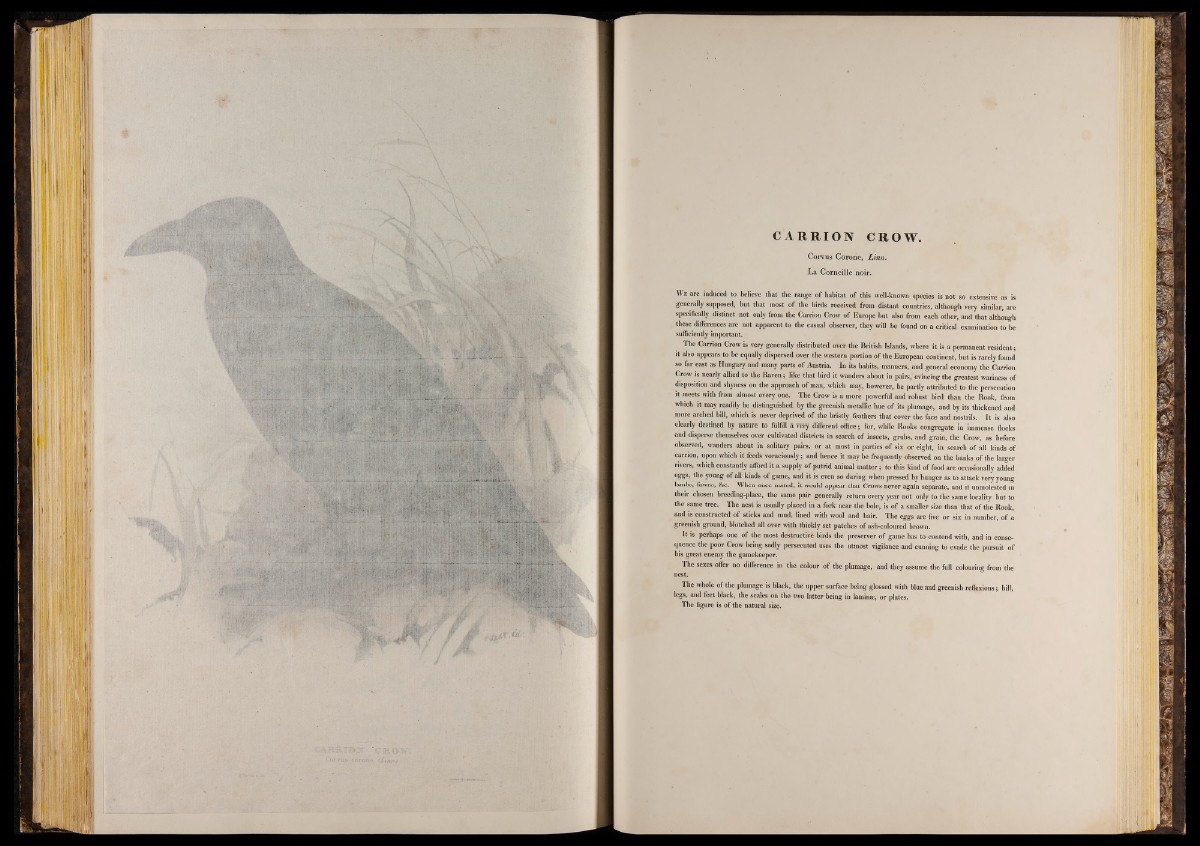
K l !
lliiü il
C A R R IO N CROW.
Corvus C o ro n e, L in n .
L a C o rn eille noir.
We are induced to believe that the range o f habitat of this well-known species is not so extensive as is
generally supposed, but that most of the birds received from distant countries, although very similar, are
specifically distinct not only from the Carrion Crow of Europe but also from each other, and that although
these differences are not apparent to the casual observer, they will be found on a critical examination to be
sufficiently important.
The Carrion Crow is very generally distributed over the British Islands, where it is a permanent resident ;
it also appears to be equally dispersed over the western portion of the European continent, but is rarely found
so far east as Hungary and many parts o f Austria. In its habits, manners, and general economy the Carrion
Crow is nearly allied to the Raven ; like that bird it wanders about in pairs, evincing the greatest wariness of
disposition and shyness on the apprqach of man, which may, however, be partly attributed, to the persecution
it meets with from almost every one. The Crow is a more powerful and robust bird than the Rook, from
which it may readily be distinguished by the greenish metallic hue of its plumage, and by its thickened and
more arched bill, which is never deprived of the bristly feathers that cover the face and nostrils. It is also
clearly destined by nature to fulfill a very different office ; for, while Rooks congregate in immense flocks
and disperse themselves over cultivated districts in search o f insects, grubs, and grain, the Crow, as before
observed, wanders about in solitary pairs, or at most in parties o f six or eight, in search o f all kinds of
carrion, upon which it feeds voraciously ; and hence it may be frequently observed on the banks of the larger
rivers, which constantly afford it a supply o f putrid animal matter ; to this kind o f food are occasionally added
eggs, the young of all kinds o f game, and it is even so daring when pressed by hunger as to attack very young
lambs, fawns, &c. When once mated, it would appear that Crows never again separate, and if unmolested in
their chosen breeding-place, the same pair generally return every year not only to the same locality but to
the same tree. The nest is usually placed in a fork near the bole, is o f a smaller size than that of the Rook,
and is constructed o f sticks and mud, lined with wool and hair. The eggs are five or six in number, of a
greenish ground, blotched all over with thickly set patches o f ash-coloured brown.
It is perhaps one o f the most destructive birds the preserver o f game has to contend with, and in consequence
the poor Crow being sadly persecuted uses the utmost vigilance and cunning to evade the pursuit o f
his great enemy the gamekeeper.
The sexes offer no difference in the colour o f the plumage, and they assume the full colouring from the
nest.
The whole of the plumage is black, thé upper surface being glossed with blue and greenish reflexions ; bill,
legs, and feet black, the scales on the two latter being in laminæ, or plates.
The figure is of the natural size.